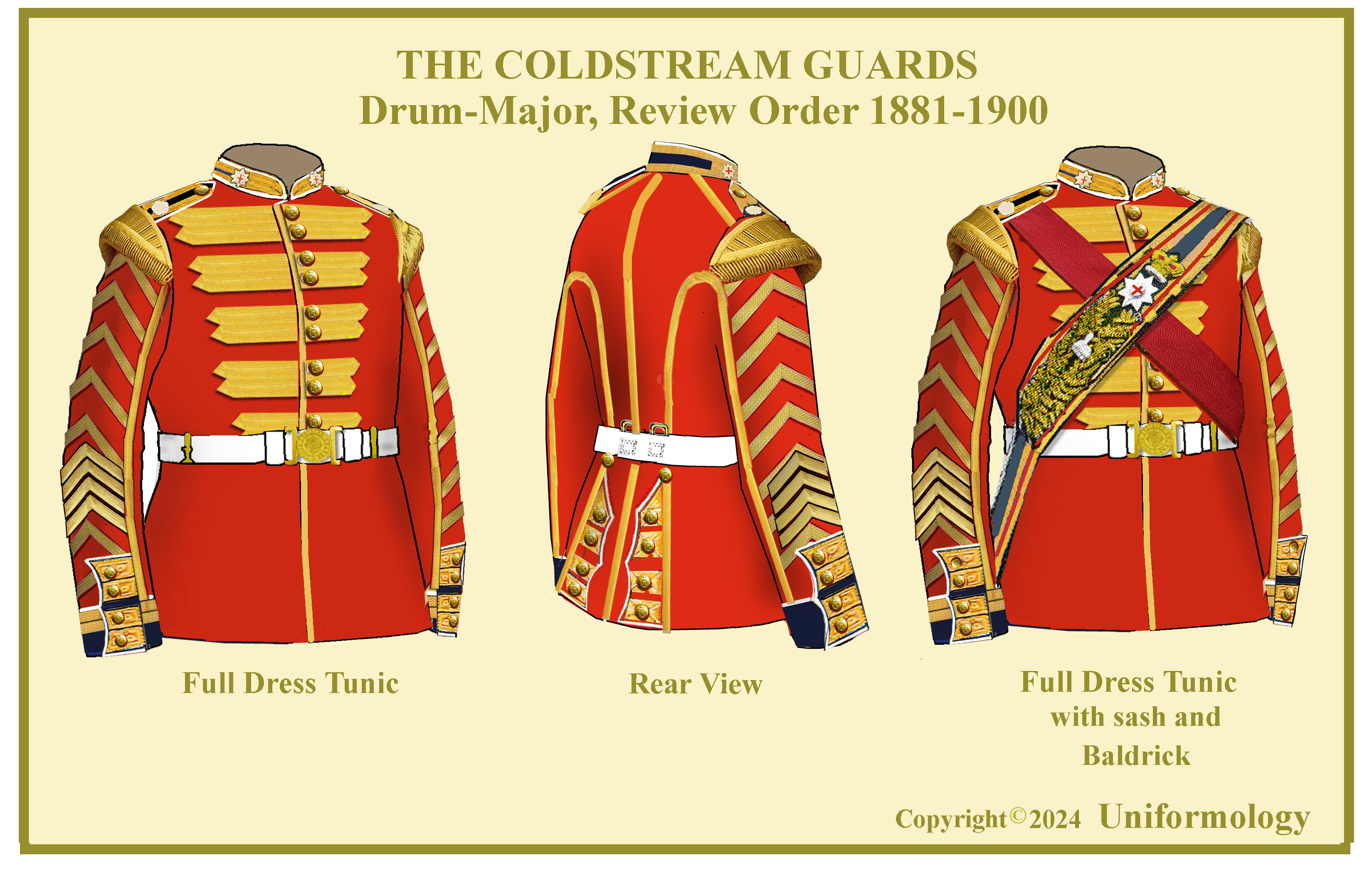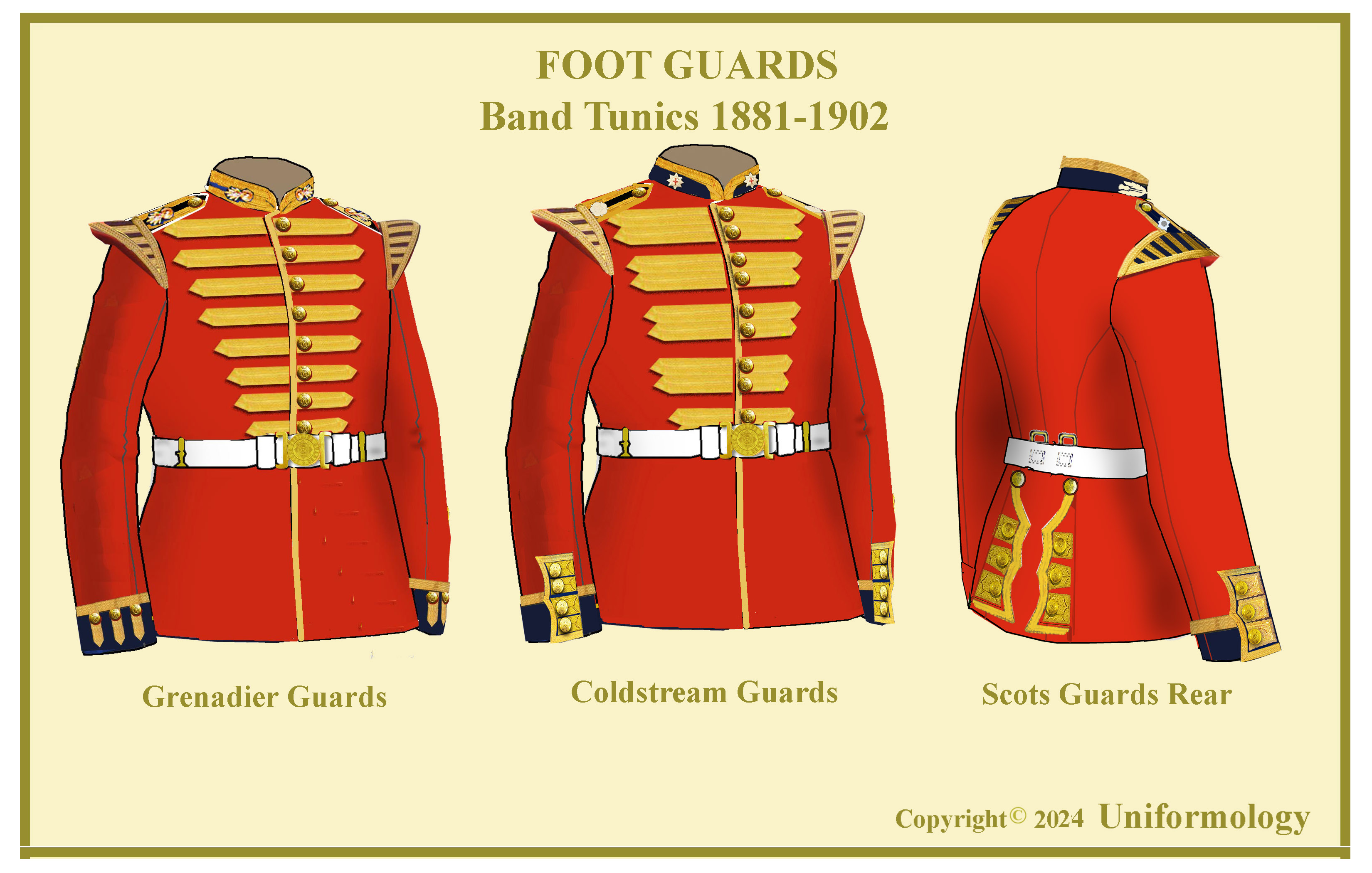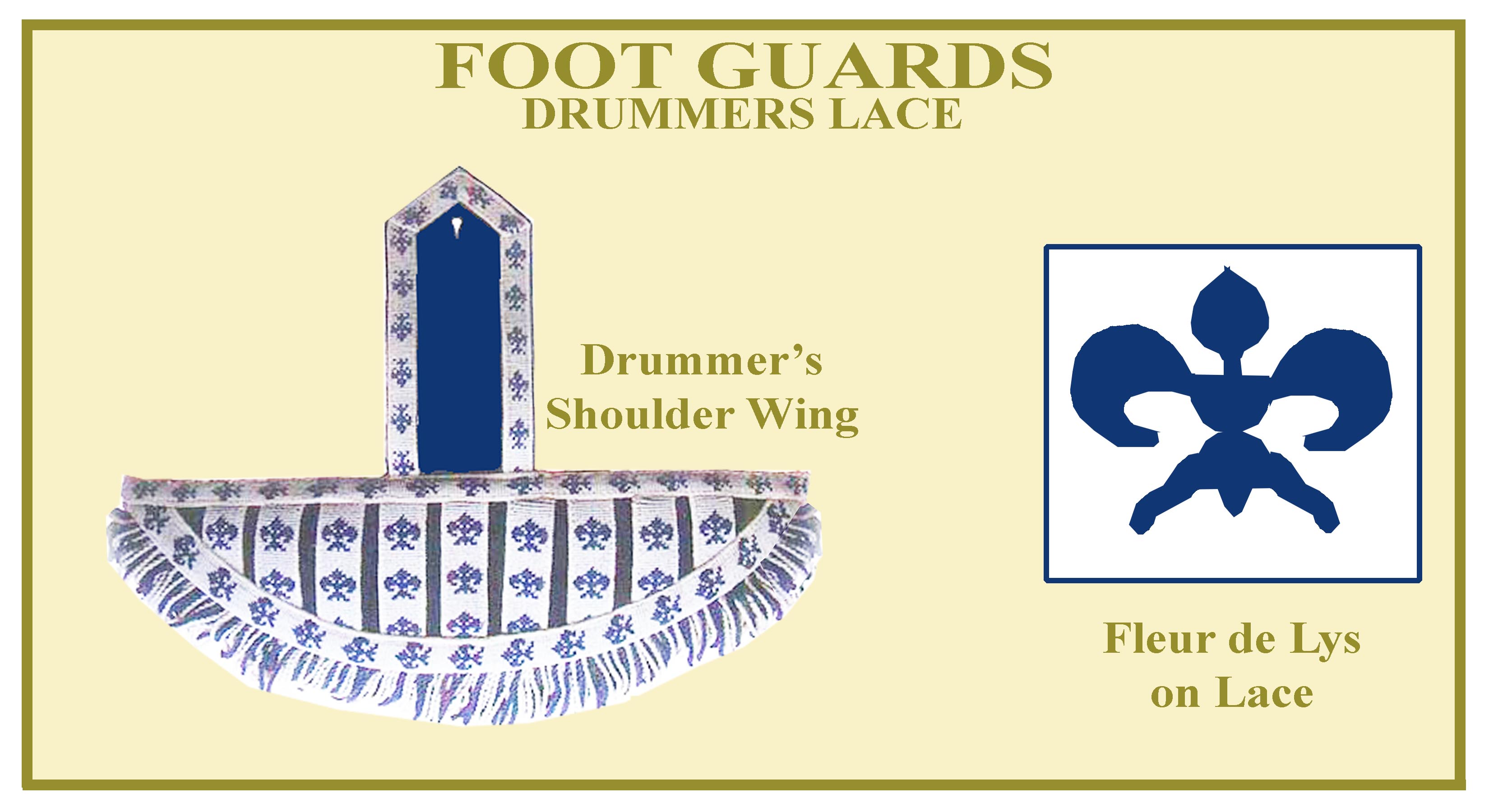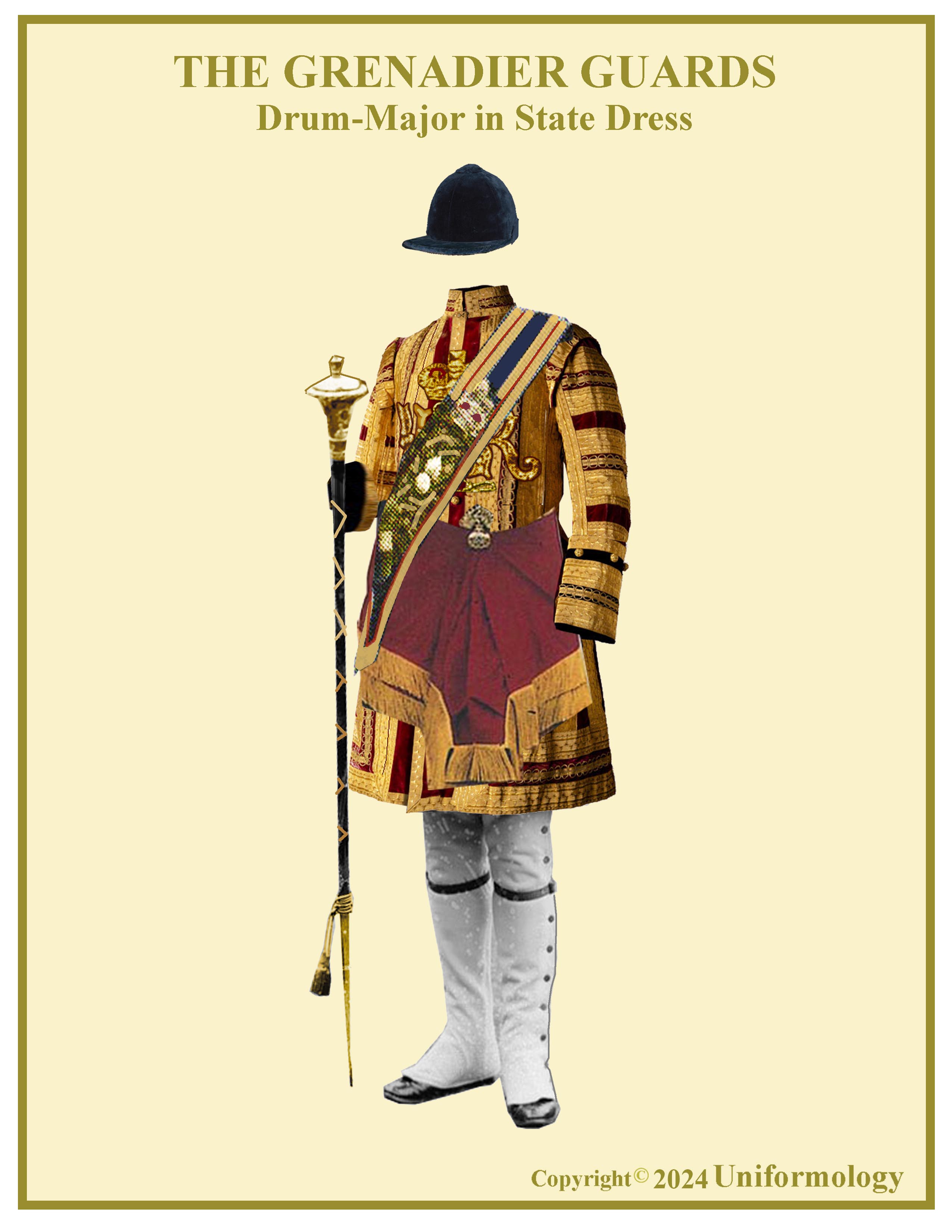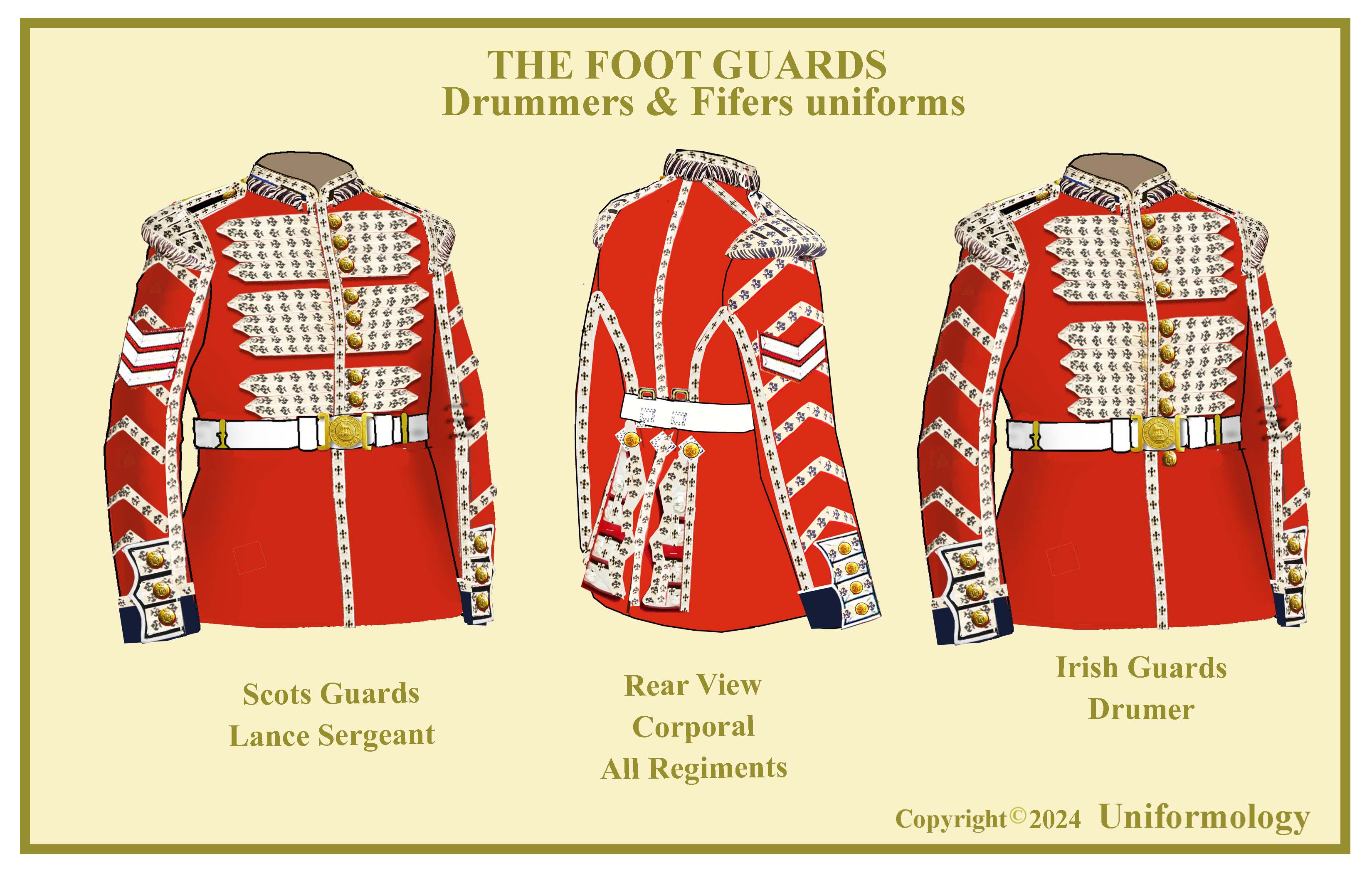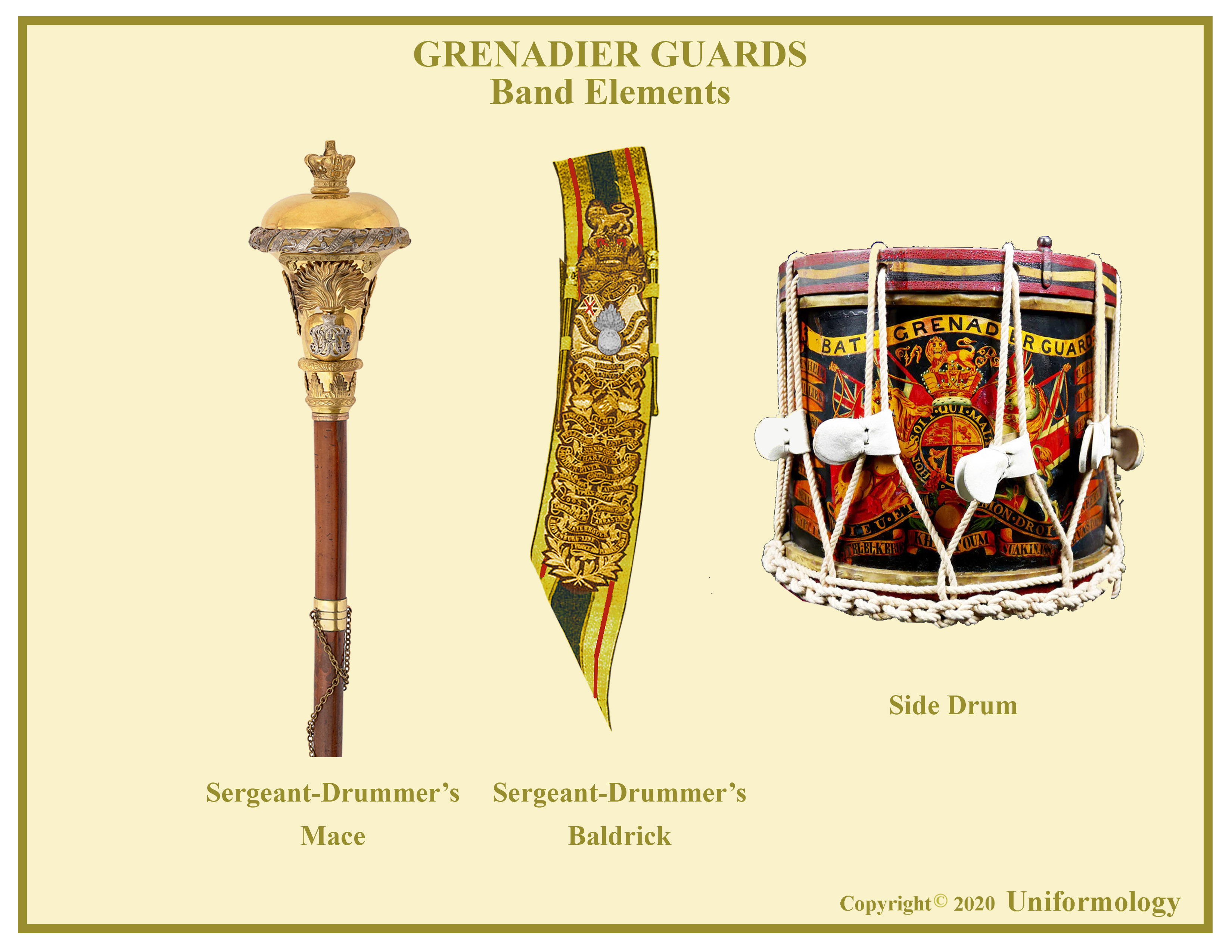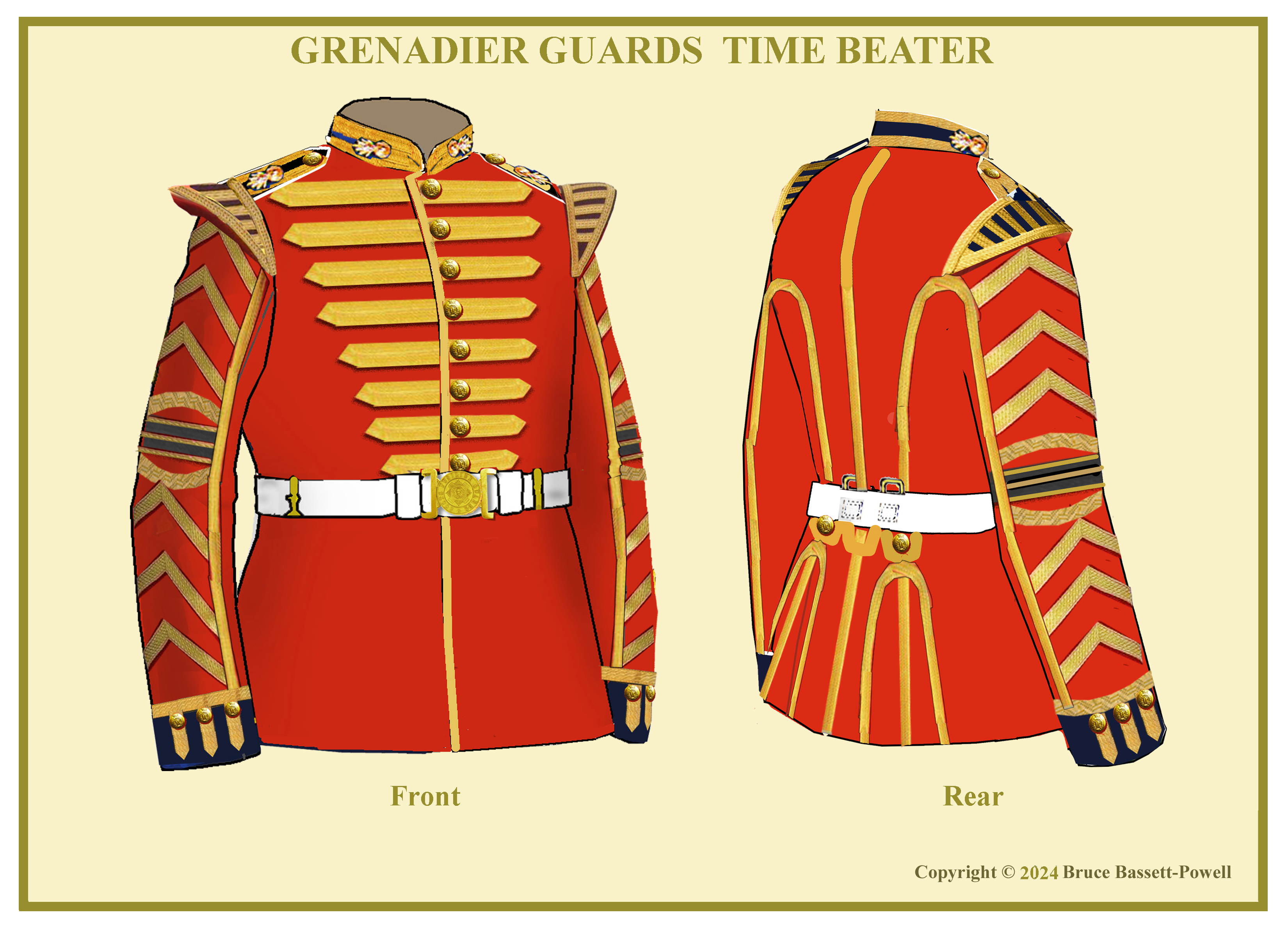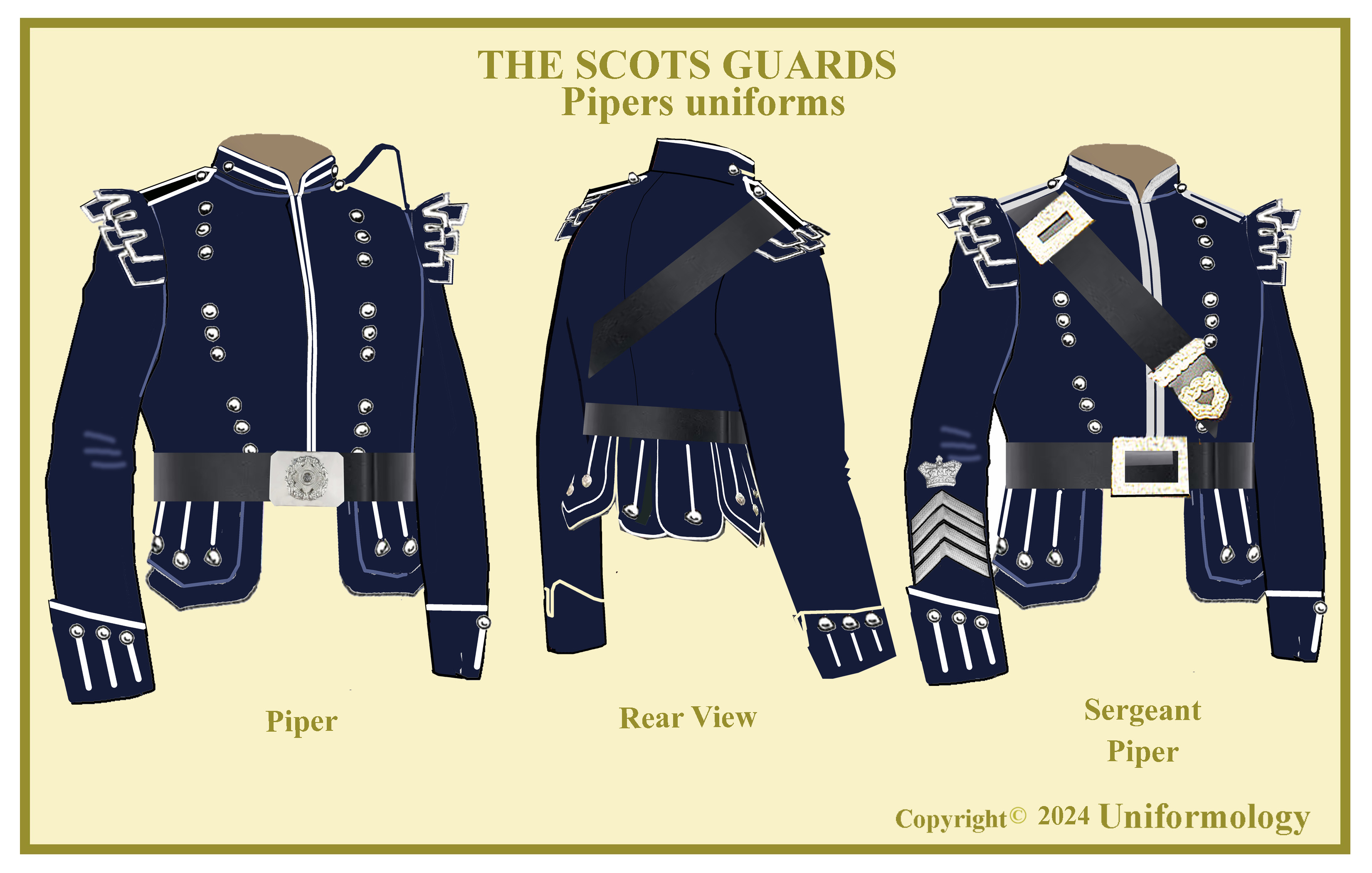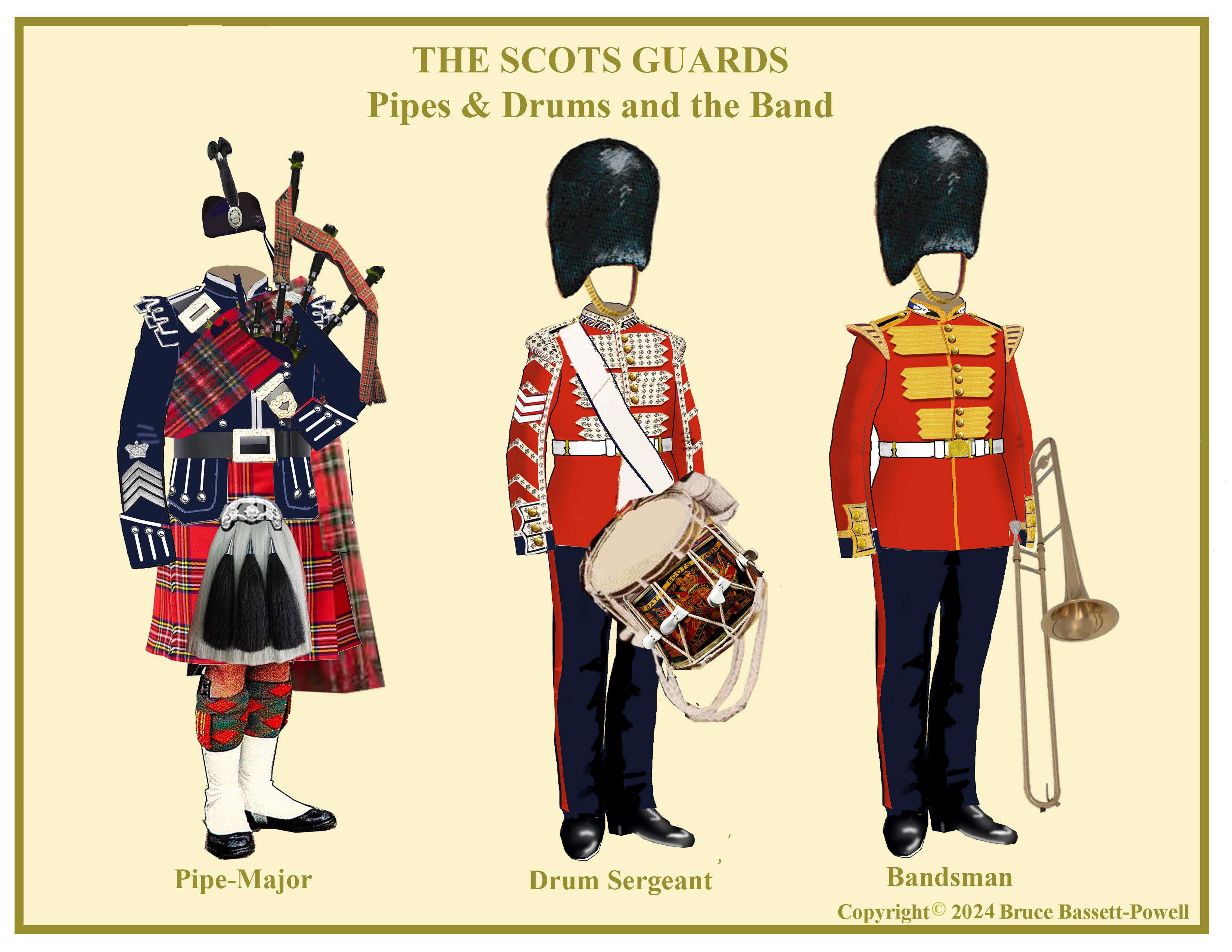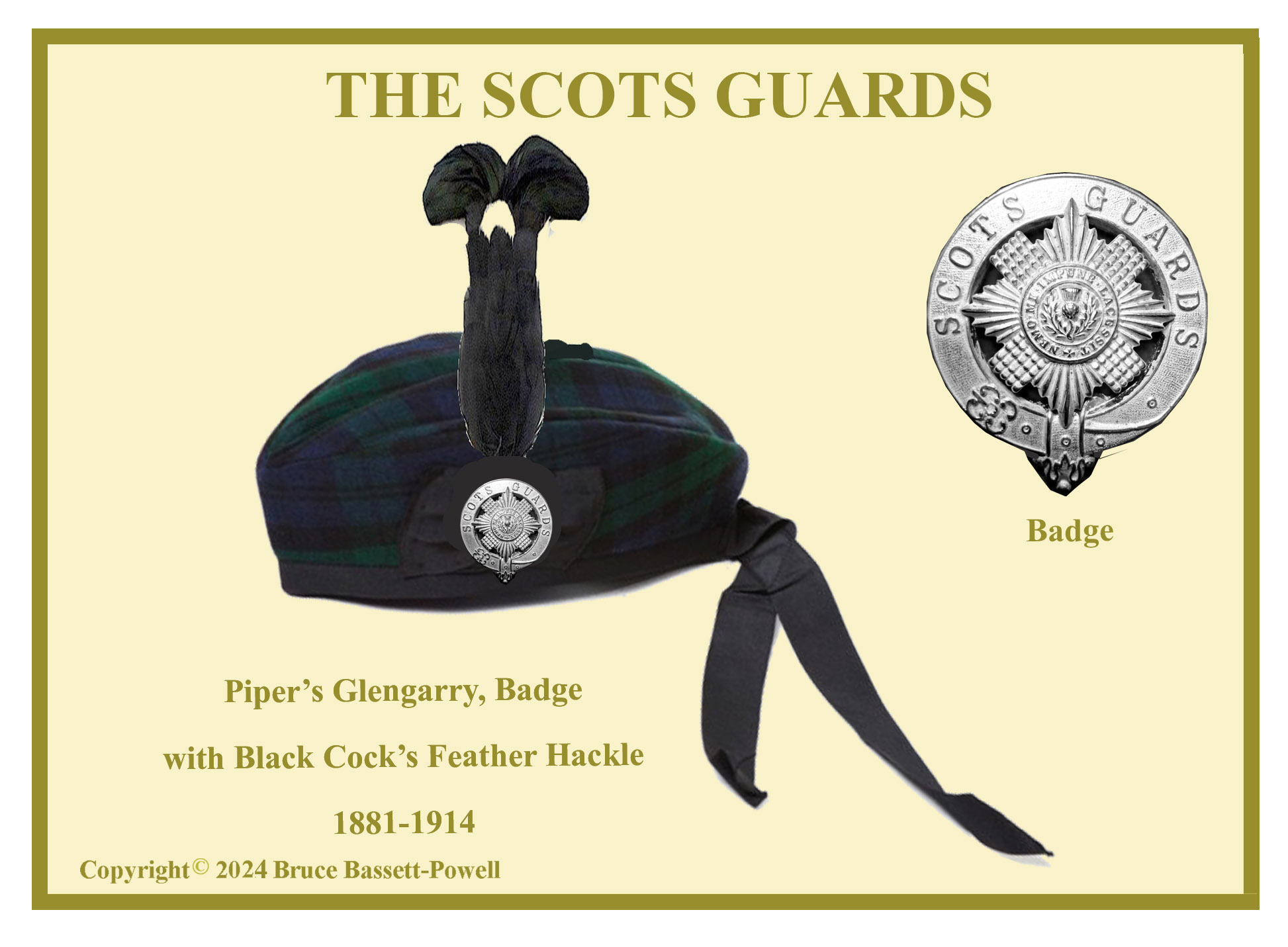UNIFORMS, ARMS & EQUIPMENTS
UNIFORMS OF THE BAND & CORPS OF DRUMS
It is no surprise that the uniforms of the band and corps of drums in the Foot Guards differed substantially from the rest of the infantry.
On State occasions and in the presence of Royalty, the Drum Major (Sergeant-Drummer until 1892) of the Foot Guards wore State dress. Like the Household Cavalry musicians, they wore the gold laced coat with the black felt Jockey Cap. Sergeant drummers wore a crimson silk apron with gold lace fringe secured with the regimental badge. No sword was worn and white gaiters were worn. The regimental baldrick or sash was blue edged in gold lace with a crimson line in the centre. At the top was the Royal Crest below which were flags in proper colours. Beneath them were scrolls with all the battle honours. In the centre was placed the Regimental badge. State dress is still worn today and can be seen at the King's Birthday Parade of Trooping the Colour.
UNIFORMS OF SERGEANT-DRUMMERS
It is no surprise that the uniforms of the band and corps of drums in the Foot Guards differed substantially from the rest of the infantry.
For regular duties, such as changing the Guard at Buckingham Palace, Sergeant-Drummers wore the sergeant's quality scarlet tunic with extra embellishments. The front was edged in 1/4 inch gold lace and at each button hole, there was a bar of gold lace, pointed at the ends, The length of the bar was reduced on each side until reaching the waist. The collar and shoulder straps were edged in gold lace. On each shoulder was a richly embroidered wing with gold fringe on the edge. All the seams on the front and rear were edged with gold lace. On each arm were 8 gold lace chevrons, points down between the seams. The rank badge of 4 inverted chevrons was placed on the right fore arm below the elbow. The example below shows the tunic of the Coldstream Guards. Note the regimental baldric over the left shoulder of the figure on the right. This uniform is worn today by the Drum-Majors of all five regiments of Foot Guards.
BANDSMEN'S TUNICS
Bandsmen wore a similar tunic to the Sergeant Drummers. The gold lace bars on each side of the tunic front were the same according to the regiment. The collar and shoulder straps were edged in gold lace. The shoulder wings were blue , edged in gold lace with seven lace bars. Grenadier Guards band had the distinction of gauntlet cuffs, similar to those of the coatees of the Guards in 1815. The other regiments had the standard cuff patches in gold lace. There was no white piping on the tunic at all. The Bass Drummer of the Grenadier Guards (known as the Time Beater) wore a black armband just under his elbow in memory of Charles II.
DRUMMERS' TUNICS
Drummers and fifers of Infantry regiments have always worn different uniforms than the rest of the regiment. From the 1750s to 1836, reversed colours were worn. (i.e. The coat was of facing colour.) This was not so in the Guards. They continued to wear the scarlet coat with, at first gold lace and by the time of Waterloo, their coats had white lace with blue Fleurs de Lys stitched in the lace. This has continued to the present day. In 1881, the three regiments of Foot Guards, the lace was single for the Grenadiers and in twos and threes for the Coldstreams and Scots respectively. They were in fours for the Irish Guards when formed in 1900.
COMING NEXT
Colours
GRENADIER GUARDS TIME BEATER
The Bass Drummer of the Grenadier Guards (known as the Time Beater) had a special tunic with chevron lace on the arms and wore a black armband just above his elbow in memory of Charles II. On the rear of the tunic there was lace on the seams and a special arrangement on the skirts. This uniform was worn into the nineteen twenties.
PIPERS OF THE SCOTS GUARDS
The Scots Guards formed a pipe band in the 1860s and by 1881 it had a full complement. Pipers in the Scots Guards were the only members of the regiment to wear highland dress. The headdress was the Blue Glengarry edged with black silk tape, which fell behind to just below the collar.. on the left side was a black silk rosette upon which was affixed a white metal badge of the star of the Thistle within a circle. Authorised in 1889 a plume of black cock's feathers was fixed behind the badge..



